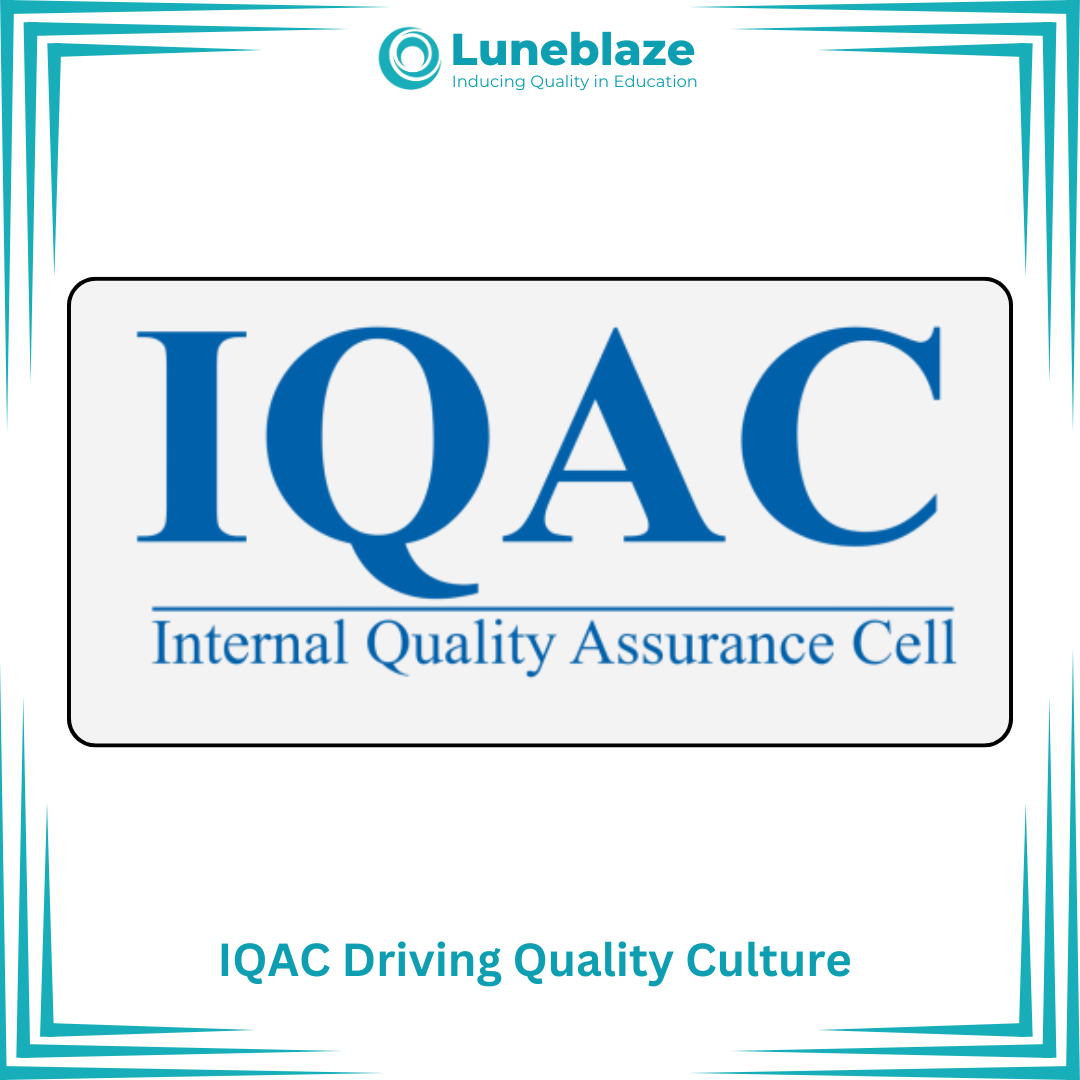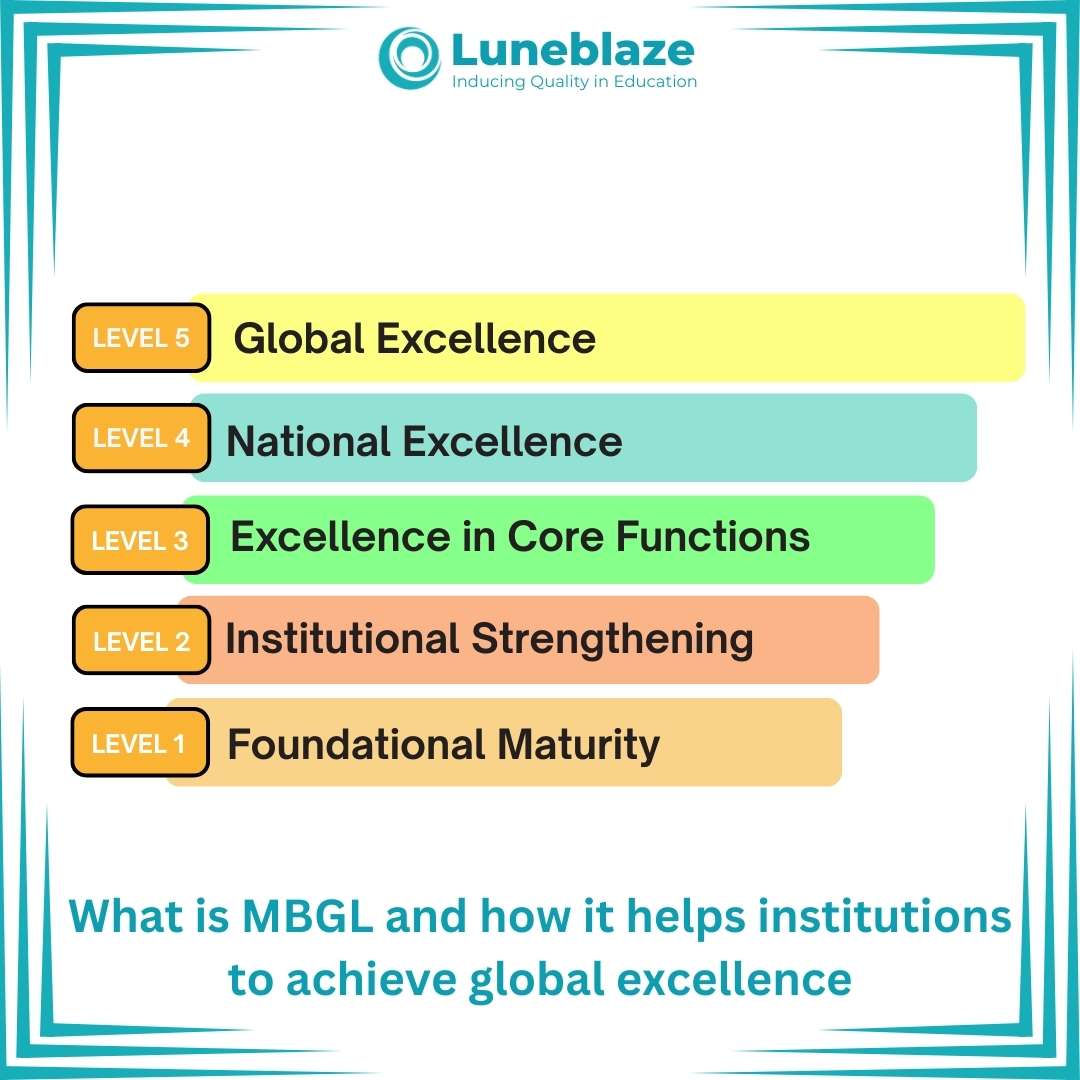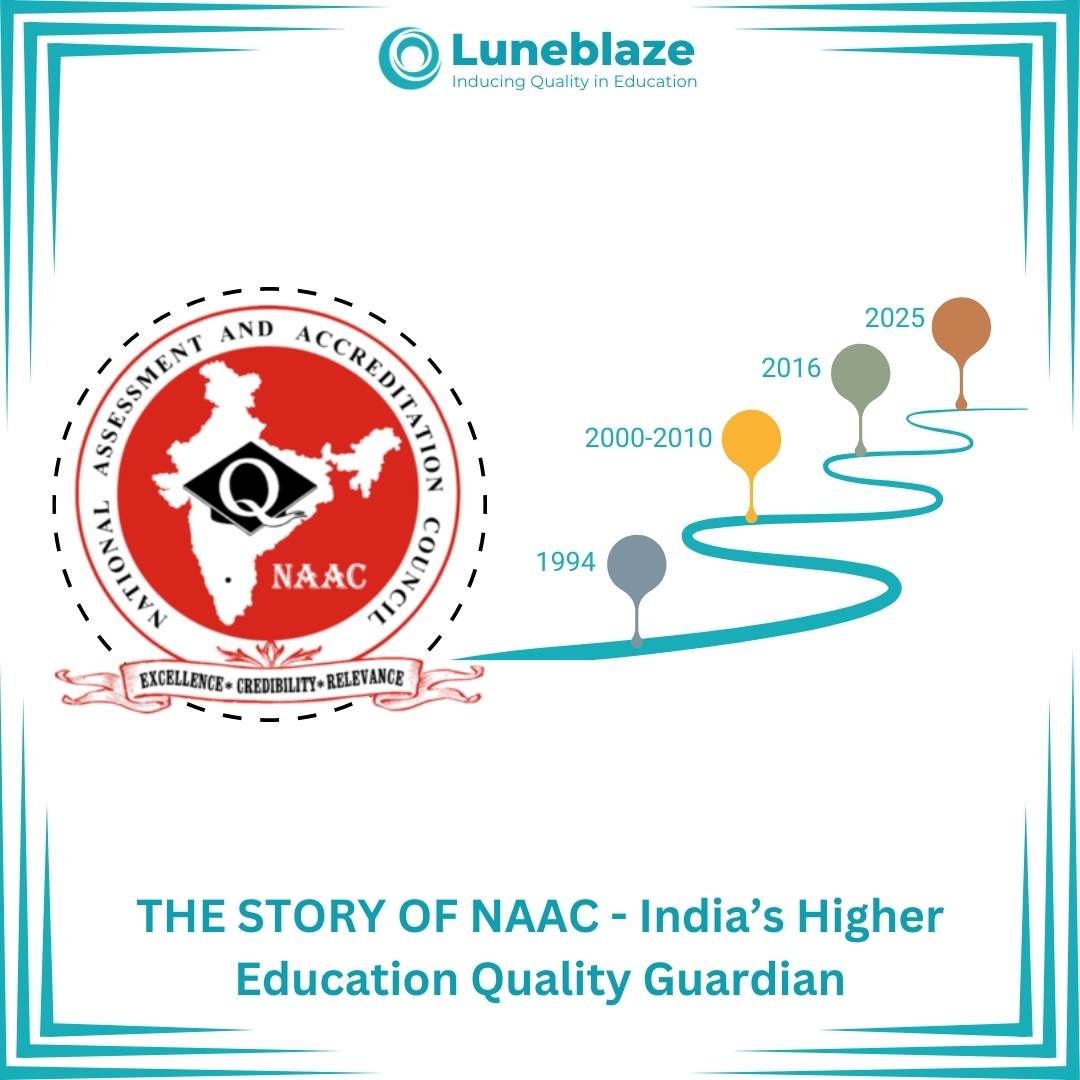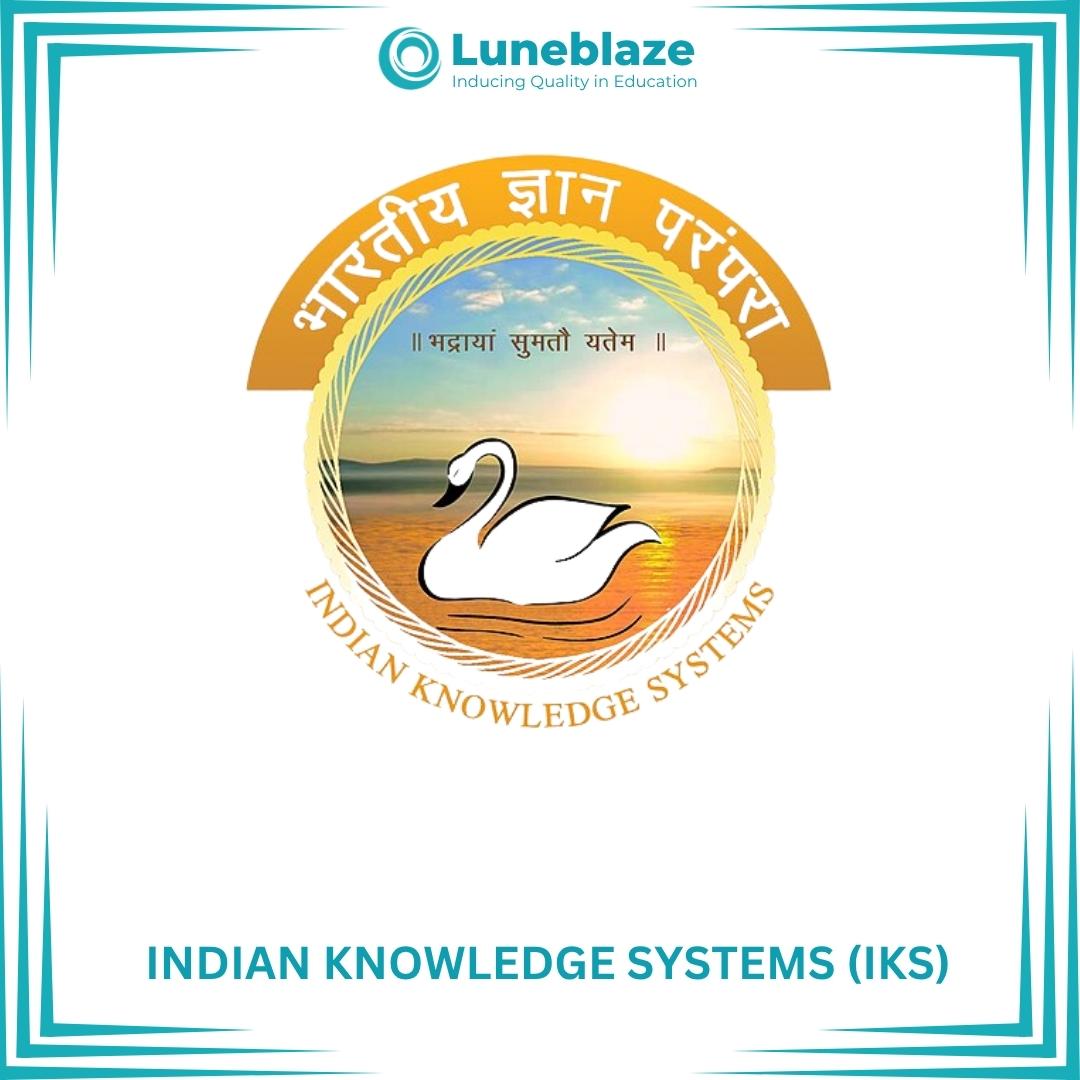Research and Innovation Outcomes: Attribute 9 in NAAC's Binary Accreditation Framework
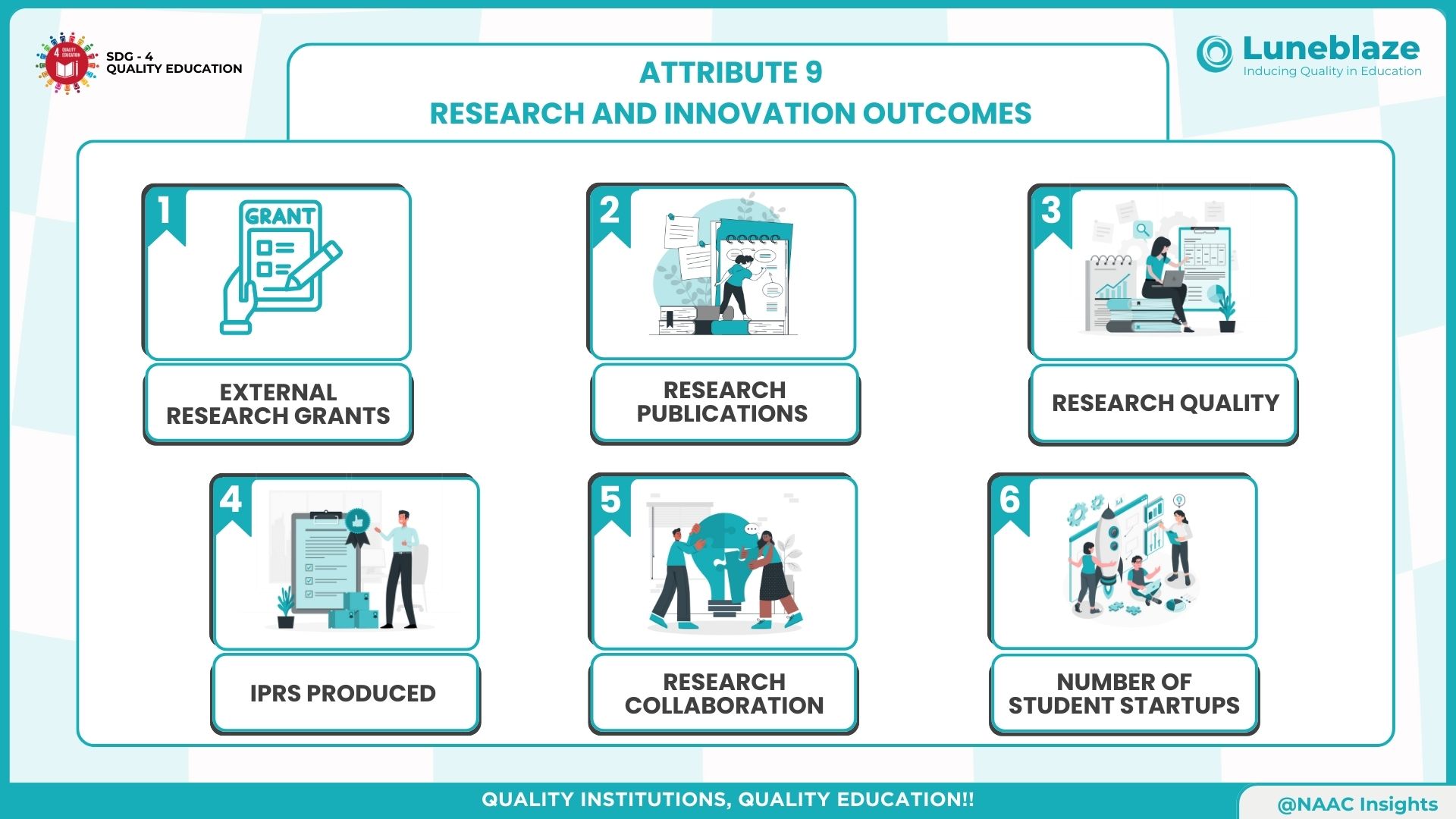
Aug 23, 2025
Imagine a vibrant university campus where curiosity drives classrooms and innovation fuels faculty rooms. As students dive into academic inquiry, and scholars engage in collaborative research, the institution itself becomes a hub of knowledge creation. In such an environment, Attribute 9: Research and Innovation Outcomes from the NAAC Binary Accreditation Framework becomes the compass for assessing academic rigor, innovation capacity, and societal impact. Research and innovation are no longer optional add-ons—they are foundational pillars that define an institution's contribution to national development, industry advancement, and global scholarship. This attribute brings together multiple metrics that measure how higher education institutions (HEIs) create, apply, and share new knowledge with the world. What is Research and Innovation Outcomes? Research & Innovation Outcomes focus on assessing the output, quality, and impact of an institution’s research activities and innovative endeavors. It considers grant funding, publications, intellectual property, collaboration, and scholarly recognition—essential indicators of academic excellence. Key Metrics Under Attribute 9: Research & Innovation Outcomes External Research Grants: This metric looks at both the number and the total value of research grants secured by faculty members from external sources. These can include government agencies, private industries, corporate houses, and international funding bodies. The focus is on how actively the institution engages in externally funded research projects. Research Publications: This measures the weighted number of peer-reviewed research publications produced by faculty, specifically those published in high-quality journals indexed in SCOPUS, Web of Science, or the UGC Care list. It also considers conference proceedings and book chapters that are externally indexed. Research Quality: Institutions are expected to ensure the integrity and authenticity of their research output. This metric evaluates how robust the institution’s plagiarism detection systems are and how effectively they foster a culture of ethical and original research. Ph.D. Awarded: This assesses the academic productivity of the institution in terms of doctoral research. It measures the number of Ph.D. degrees awarded by the institution in proportion to its full-time faculty, reflecting its capacity to mentor and produce advanced research scholars. Research Fellowships: This metric counts the number of competitive research fellowships—like Junior Research Fellowships (JRF) and Senior Research Fellowships (SRF)—received by the institution. It reflects the institution’s success in supporting scholars in achieving recognition and funding at the national or international level. Intellectual Property Rights (IPRs) Produced: Here, the focus is on the total number of intellectual property rights generated by the institution in the past three years. This includes patents, copyrights, and trademarks that have been officially granted. It highlights the institution’s contribution to innovation and knowledge commercialization. Research Collaboration: This final metric evaluates the extent and quality of the institution’s research collaborations with national or international bodies. Special emphasis is placed on partnerships that encourage interdisciplinary work, inter-university or international faculty involvement, community-based research, and technology transfer. Alignment with NAAC Binary Accreditation Framework Attributes Attribute 1: Curriculum: A strong research culture enhances curricular quality. Faculty publications influence teaching content, ensuring students engage with cutting-edge knowledge. Integrating research methodology into the curriculum empowers students to become investigators and not just consumers of knowledge. Attribute 2: Faculty Resources: Faculty involved in funded research or collaborative innovation projects often gain exposure, training, and recognition. This promotes academic development and global competitiveness, making the institution an attractive place for both scholars and students. Attribute 3: Infrastructure: Research labs, digital libraries, plagiarism detection software, and innovation cells are physical and digital infrastructures that support research. Institutions investing in these areas directly contribute to research outputs under Attribute 9. Attribute 4: Financial Resources & Management: Research grants and intellectual property create revenue streams. Efficient management of project funding and royalty mechanisms strengthens institutional autonomy and financial sustainability. Attribute 5: Learning and Teaching: PBL (Problem-Based Learning), capstone projects, and real-world case studies derived from ongoing research make classroom learning dynamic and practical. Faculty-led research often involves students, improving their analytical and critical thinking skills. Attribute 6: Extended Curricular Engagements: Students participating in research fellowships, community-based projects, or startup incubators gain hands-on experience. This fosters interdisciplinary learning and creates bridges between classroom theory and societal application. Attribute 7: Governance and Administration: Well-structured research policies, ethical review boards, and IPR cells reflect transparent governance. Administrative efficiency in managing grants, compliance, and partnerships ensures that innovation thrives. Attribute 8: Student Outcomes: Engagement in research elevates student profiles—especially for those aspiring for higher studies or roles in R&D, policy, or entrepreneurship. Institutions producing Ph.Ds and nurturing fellowships signal academic depth and mentorship. Attribute 9: Research and Innovation Outcomes: This is the core attribute itself. Every metric in this category is a mirror of the institution’s commitment to knowledge production, quality assurance, intellectual property, and global research networks. Attribute 10: Sustainability (Green Initiatives): Research on sustainability, climate resilience, and renewable energy often emerge as top priorities. Institutions that drive innovation in sustainable technologies contribute not just to their academic stature but to the planet’s future. Why Research & Innovation Outcomes Matter Research-rich institutions drive societal change. From finding medical breakthroughs to designing inclusive policy frameworks, HEIs act as the intellectual engines of national progress. The metrics under Attribute 9 ensure that this role is not just aspirational but measurable and accountable. Institutions that score well on this attribute are: Likely to attract top-tier faculty and students, More eligible for government and international funding, More influential in shaping national and global academic discourse. How HEIs Can Strengthen Attribute 9 Establish internal research grant programs to seed innovation. Invest in training on proposal writing, IPR filing, and ethical research practices. Create collaborative ecosystems through MoUs with national and international universities, industry, and NGOs. Promote open-access publication policies and invest in research infrastructure. Integrate student-led research projects into course assessments and capstone experiences. In Conclusion Attribute 9 in the NAAC Binary Accreditation Framework is more than a checklist. It is a call to institutions to become beacons of inquiry, innovation, and impact. From grants and publications to patents and partnerships, the metrics are tangible indicators of how an institution contributes to the advancement of knowledge and society. By embedding research across every layer—from curriculum to community—HEIs create a culture that goes beyond academic performance. They cultivate solutions, shape thought leadership, and transform students into global changemakers. To support Colleges and Universities (HEIs) in their accreditation journey, Luneblaze provides a comprehensive end-to-end solution to HEIs for all their accreditation criteria needs. From document creation and evidence management to workflow optimization, audits, filing support, faculty training, and expert consultation, empowering institutions to deliver Quality Education and achieve NAAC Accreditation Excellence. Together, let’s raise educational standards. Reach us at: naac@luneblaze.com
Trusted by
100+
Institutions
worldwide
since 2017
Get started with Accreditation Excellence
Explore how our AI-enabled accreditation solution simplifies the accreditation journey

